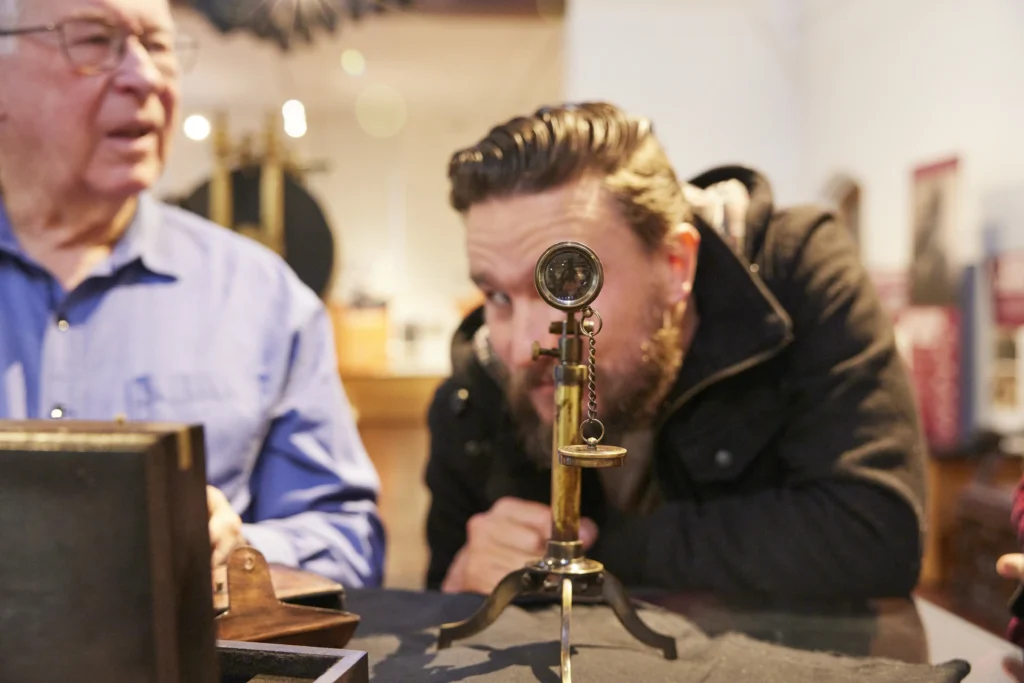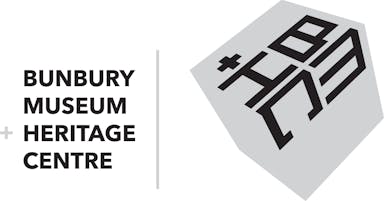

Aboriginal people:
The original inhabitants of the area now known as Bunbury (or ‘Goomburrup’) are the Wardandi Noongar Aboriginal people, who have lived in the South West for over 45,000 years. This area was a seasonal gathering place, with good sources of food, and sites for ceremonial gatherings.
Early European settlers recorded seeing hundreds of Aboriginal people gathered from around the South West, and that they were shown good hunting grounds.
However, a clash of cultures resulted from opposing views of the ties to the land. While Aboriginal people saw the land as their provider and the base of their culture, Europeans saw the land as a commodity that they owned.
Aboriginal people were employed by Europeans, but the community was marginalised as Bunbury grew and statutory authorities controlled their right to marry, move around the state, and find jobs.
The involvement of Aboriginal people in World War 1 and World War 2 was significant, but did not overcome negative perceptions.
Hundreds of Aboriginal children were trained in horticulture and domestic service at the Roelands Mission, near Bunbury, but had to leave about the age of 14, poorly equipped to advance in society.
In 2016, the Western Australian Government passed legislation recognising the cultural connection of Noongar people to their land, and providing funding for Noongar cultural and education development programs.
Europeans:
Since the 1650s, the Dutch, French, American and finally British seafarers shaped Bunbury, whether they were blown off course, exploring, trading or seeking a new life as settlers in a colonial outpost.
Research is still underway into the brief landing of a Dutch trading ship, the Elburg, in 1658. The story is little-known, but the Museum is supporting further inquiries into the story that the Elburg crew were probably the first Europeans to land.
In 1800, French Emperor Napoleon Bonaparte sent a scientific expedition to the ‘southern land’ under the command of Nicolas Baudin. The crew of Le Geographe explored the estuary and mapped the South West, also taking flora and fauna specimens back to France and leaving French names associated with many key areas they had visited. The Baudin expedition named this area Port Leschenault, a name the British used until re-naming the townsite Bunbury.
As fertile land was taken up in the Swan River Colony, which was settled from 1829, land had to be found elsewhere for newly arriving settlers.
The Western Australian Governor, James Stirling, arranged for a townsite to be surveyed and took a large land grant himself at the southern edge of the town, now marked by Stirling Street. Governor Stirling named ‘Bunbury’ after the soldier Lieutenant Henry Bunbury who was the first to travel to the area overland.
First settlers:
Governor James Stirling sent farmers John and Helen Scott to develop a farm on his land in 1838, at Eelup, which is now a major traffic intersection to the east of Bunbury.
The early settlers depended heavily on trade with North American whaling ships, who were already catching whales in the Indian Ocean and rendering their fat for whale oil. The settlers provided fresh meat and vegetables, which the whalers exchanged for oil, tobacco, and spirits.
Violent storms from the north west left several whaling ships wrecked on Bunbury’s shore, including the Samuel Wright and the North America I in 1840 and a second ship called the North America II in 1843. The timbers and any metal fastenings of these wrecked ships were salvaged to use for building and tools.
Australind – a planned settlement:
Back in Britain, lots were sold for a new town to be developed close to Bunbury as a planned community with educational and recreational facilities, on the Leschenault Inlet. It was promoted as ‘Australind’, named after a proposed trade to be developed, of breeding horses to be sold to India.
Settlers arrived from 1842 and found minimal facilities and resources, as well as a harsh climate and unfamiliar soils which proved overwhelming. Most left, returning to England or trying their luck elsewhere in Australia. However, some families stayed, including the family of the Australind Chief Commissioner, Marshall Waller Clifton, and these people became some of the most prominent and successful families as Bunbury grew.
Growth of Bunbury:
At first, Bunbury grew slowly, with the port expansion limited by the shallow waters of the estuary and extremely hard underlying basalt rock. The rate of development accelerated as the convicts worked on draining swamps, building the timber jetty, roads and bridges, and being hired out to farmers.
A key factor which boosted the growth of Bunbury was discovery of gold in the Coolgardie and Kalgoorlie area, as taxes flowed into the Western Australian economy, and Bunbury’s MP Sir John Forrest became the state’s first Premier.
Within a few years at the end of the nineteenth century, Bunbury had a new public hospital, a large Post Office, and a railway station with links from the port throughout the South West.
This infrastructure helped Bunbury continue to grow, reaching a population of about 3,000 people at the turn of the century.
Bunbury strongly supported Australia’s involvement in World War 1, and many industries were affected by the worldwide depression of the 1930s. After World War 2, the jetty reached its peak capacity, and changing shipping requirements led to the start of plans for land-backed berths, and then the Inner Harbour which is still developing today.
Officially a City since 1979, Bunbury is now the main regional centre in the South West of Western Australia and the state’s third most populous city, with a strong awareness and appreciation of its unique heritage captured within the Museum.
Other resources on the history of Bunbury can be found within the City of Bunbury’s Local Studies Collection, the organisations within the Greater Bunbury Heritage Organisations Network, the Noongar Boodjar Language Cultural Aboriginal Corporation, and the Museum of Perth’s Streets of Bunbury website.
